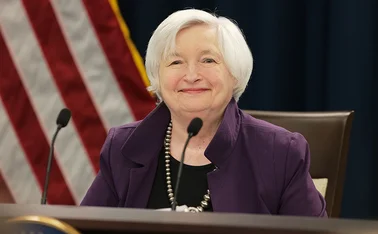
Efficient markets’ failure hamstrung central banks: CentralBanking.com panel
The efficient markets hypothesis was one example of a failed theory used by central banks to develop policy frameworks and rules, two out of three panellists at a CentralBanking.com web seminar on Tuesday said.
The theory, first expounded to a wide audience in May 1970 by Eugene Fama, at present a professor at the University of Chicago's Booth School of Business, states that market efficiency means that prices tend to incorporate and reflect all relevant information about an asset.
Brandon Davies, a member of the Financial Markets Group at the London School of Economics, said the fact that the rules guiding central banks' policymaking were in a large part built on the efficient markets hypothesis was problematic. "You have the determinants of the value of an asset – exposure at default, probability of default and loss given default – and it has nothing to do with liquidity," Davies said. "[But] it is pretty clear that liquidity plays a massive role."
Danny Gabay, a director at Fathom, a UK consultancy and forecaster, said the theory was "the major casualty of the crisis". There was a fundamental problem with conceiving of investors as perfectly rational, he said, pointing to the rapid narrowing of the spread between Greek debt and German bunds following the announcement of a eurozone bailout for the former. "Was [that] ever sensible? Did Greece change fundamentally [in that period]?" The thrust of the so-called Greenspan doctrine – the idea that modern investors do best left to their own devices – led to post-hoc rationalisation, Gabay, formerly an economist at the Bank of England, added.
For Davies, this related to a broader worry about a shift in the profession of economics as a whole. "What we're doing now is hypothesising a certain perfect market and transmitting that to the wider world. It is completely the opposite of traditional economics, [which focused on] describing the world." Central banks have amplified this by stocking their rosters with plenty of economists rather than market experts, Davies said, adding: "There's no better illustration of that than at the Bank."
Tim Young, a former trading manager at the Bank, took issue with the view that the efficient markets hypothesis was flawed. "Lehman was a revelation, and it was rational that some asset prices changed a lot."
Neither was it the case that central banks had completely disregarded the importance of liquidity to the equation, Young said. "We'd seen it in the demise of Long Term Capital Management [when] an awful lot of long-term treasuries were suddenly illiquid." The problem was that the full potential impact of the hedge fund's collapse was not realised because of the Federal Reserve's organisation of a bailout, Young said. "In some ways, we didn't learn a lesson." Davies agreed, saying sharp shocks were necessary to ensure the lessons of each mistake were not "intellectually brushed under the carpet".
What alternative?
There was no need to cling to the theory – a point which Davies applied more broadly to the idea of rules to govern policy on the whole. "What we must never do is hang on to the rules – [either] because they've worked in the past and are assumed to work in the future, which is not always the case; [or] because they are a safe haven." Central banks, in particular, were guilty of using rules as a safe haven, Davies argued.
There were alternatives to the efficient markets hypothesis, Gabay said, pointing to the bodies of work of Keynes and Hyman Minsky among others. There was a need to pick a theory where prolonged periods of disequilibrium were possible. "[Price] can be a long way from the fundamentals for a long time. In efficient markets, all prices are clearing prices," whereas in reality, bubbles also figured, he said.
To Davies, the model's applicability was also constrained by the fact that the eponymous efficient market does not exist in many parts of the world. This should be reflected when regulators attempt to write global rules. "If you are running an economy with an aging population, [high] GDP per capita and highly developed markets, would you have the same objectives for your banking system as an economy with a young population, potentially fast growth and undeveloped markets? The structure of risk and risk appetite just wouldn't be the same."
Only users who have a paid subscription or are part of a corporate subscription are able to print or copy content.
To access these options, along with all other subscription benefits, please contact info@centralbanking.com or view our subscription options here: subscriptions.centralbanking.com/subscribe
You are currently unable to print this content. Please contact info@centralbanking.com to find out more.
You are currently unable to copy this content. Please contact info@centralbanking.com to find out more.
Copyright Infopro Digital Limited. All rights reserved.
As outlined in our terms and conditions, https://www.infopro-digital.com/terms-and-conditions/subscriptions/ (point 2.4), printing is limited to a single copy.
If you would like to purchase additional rights please email info@centralbanking.com test test test
Copyright Infopro Digital Limited. All rights reserved.
You may share this content using our article tools. As outlined in our terms and conditions, https://www.infopro-digital.com/terms-and-conditions/subscriptions/ (clause 2.4), an Authorised User may only make one copy of the materials for their own personal use. You must also comply with the restrictions in clause 2.5.
If you would like to purchase additional rights please email info@centralbanking.com test test test







